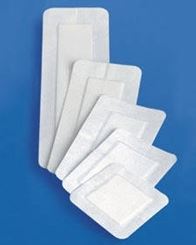Cuts and grazes that occur on the surface of the skin may be painful and could bleed. Superficial cuts and grazes are likely to scab over and heal quickly however, if the part of the body constantly moves e.g. knees and elbows, the healing process can take longer. Deeper cuts may cause damage below the skin such as to the blood vessels (veins).
When the body is healing from a cut or a graze, one of the first signs of healing is when the skin becomes inflamed (skin becomes red and warm). In order for the wound to heal properly, it needs to be kept moist as this will allow the skin to repair and grow new tissue.
Treatment for cuts and grazes
The usual type of treatment for cuts and grazes are dressings or plasters – here are some tips for advising your customers on how to look after their wound:

- Stop the bleeding by applying pressure to the injury using a towel/bandage.
- If the wound is heavily bleeding, DO NOT wash it, seek advice from a first aider or pharmacist and/or signpost the patient to your local minor injuries service e.g. Walk in centre.
- To dress the wound, wash the area under running water and tap dry with a clean towel before applying a dressing/bandage.
- Keep the dressing clean by changing it as often as necessary.
- Antiseptics should only be used for a short time and if the wound isn’t healing, seek medical attention.
Types of OTC treatment
- The simplest types of dressings are plasters and they come in different sizes and shapes i.e. fabric, waterproof, plastic, medicated and so on. They are ideal to protect smaller cuts and grazes.
- Antiseptics can be applied under a plaster for extra protection from germs and come in different forms such as sprays, creams and lotions.
- To manage the pain, you can recommend paracetamol or ibuprofen – don’t forget to use your WWHAM questions to make sure it’s suitable.
- For larger and deeper cuts, it would be advisable to use a more substantial dressing to promote healing.
